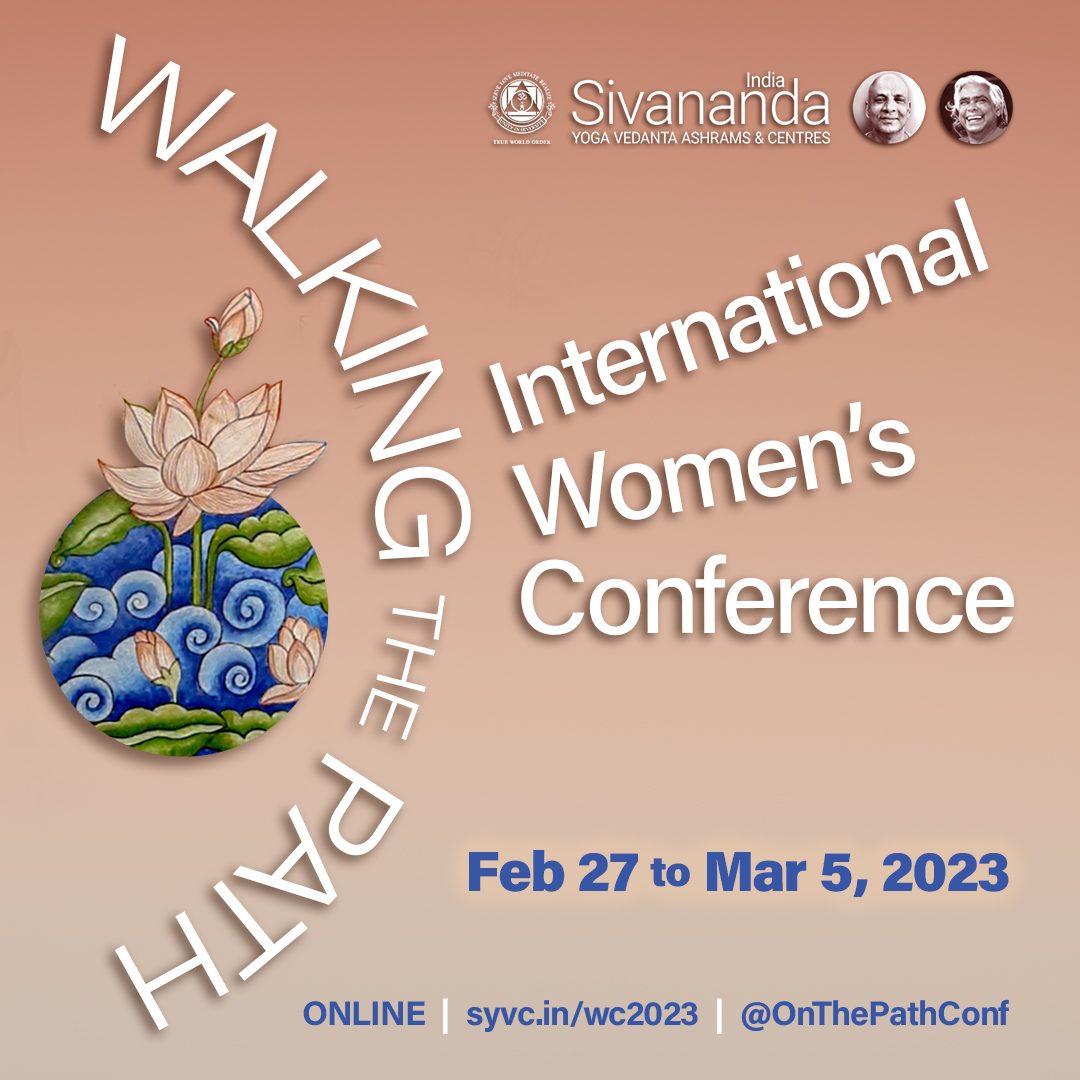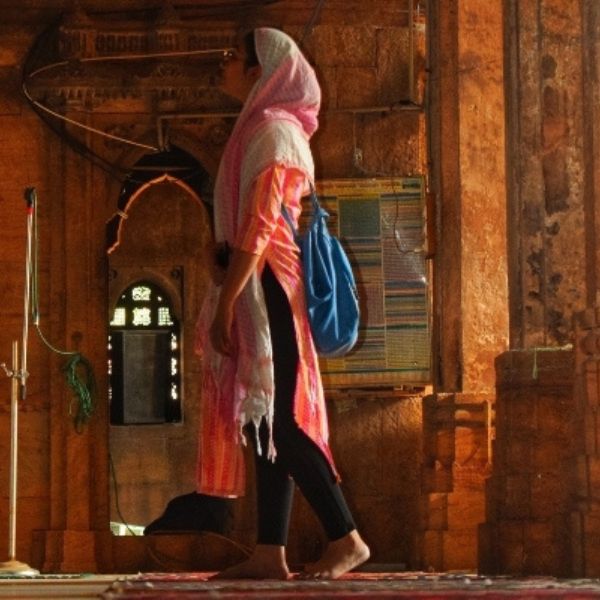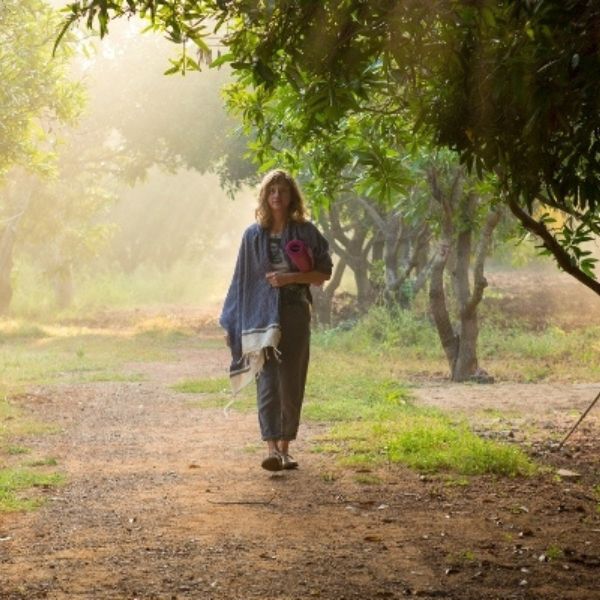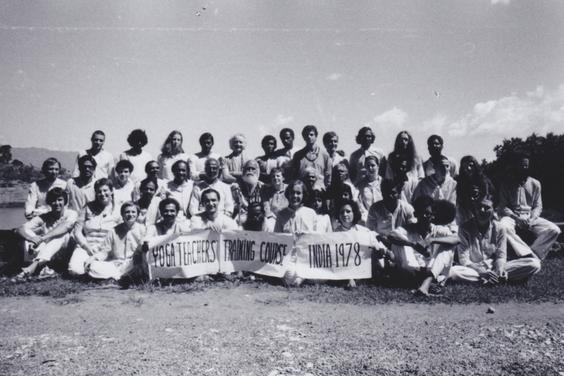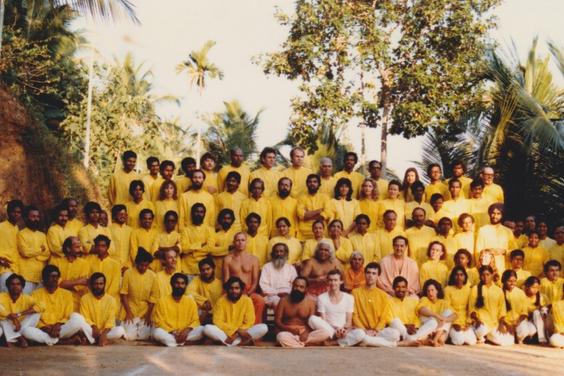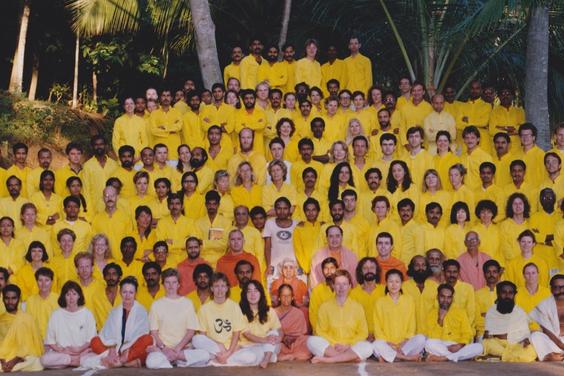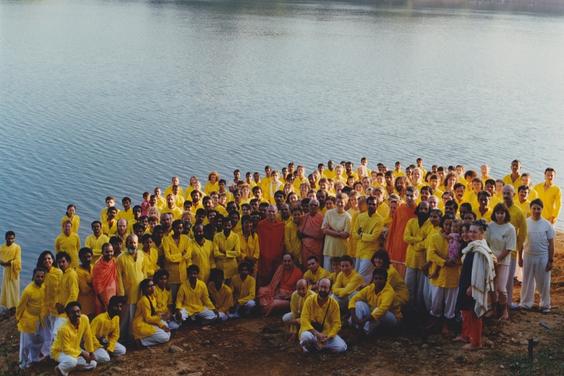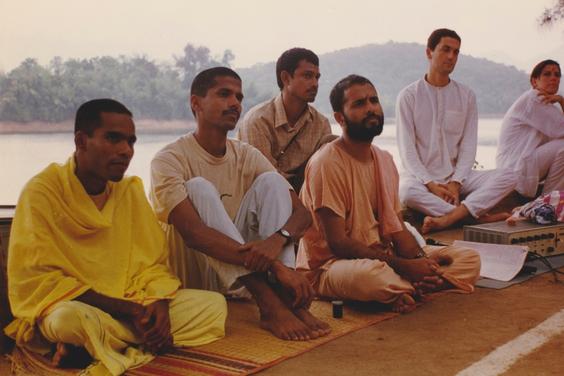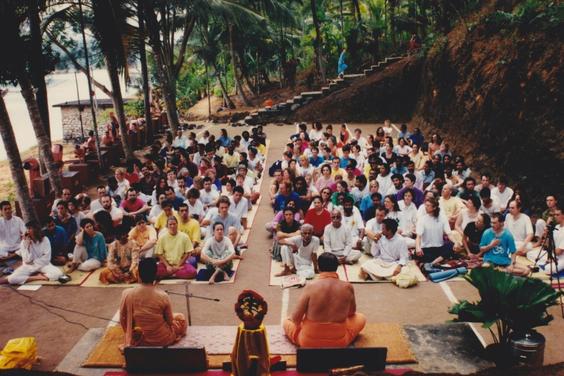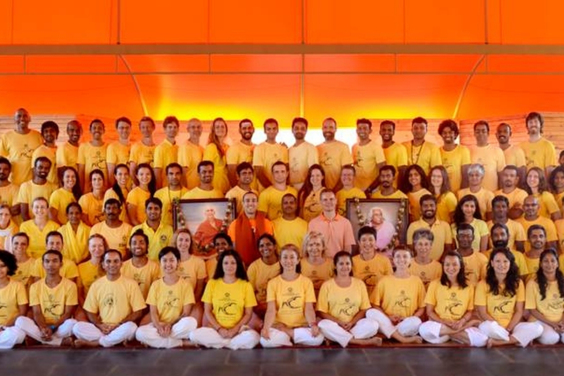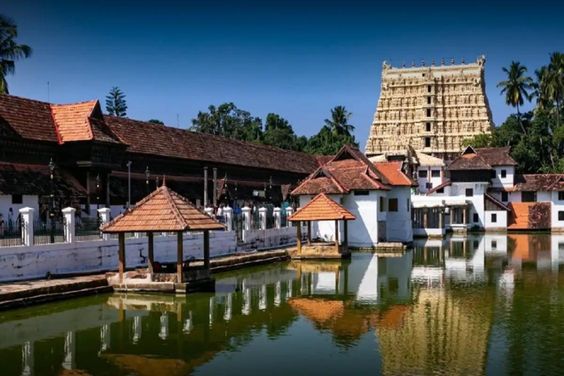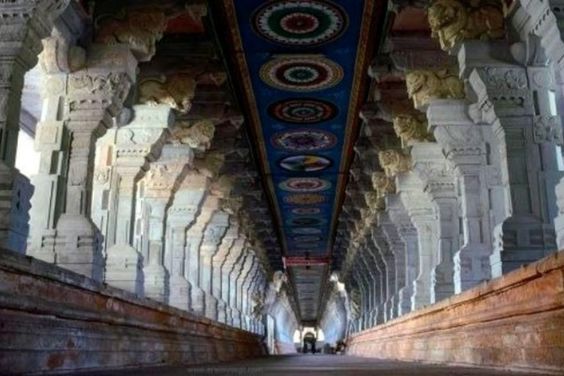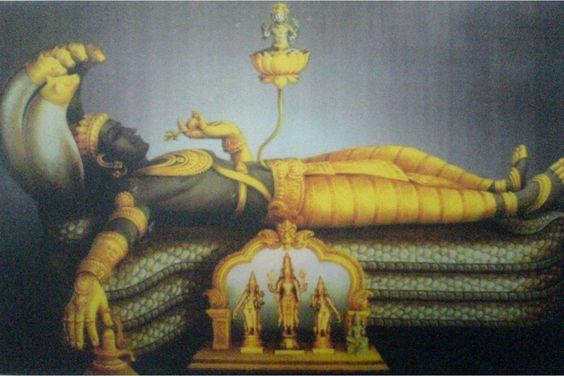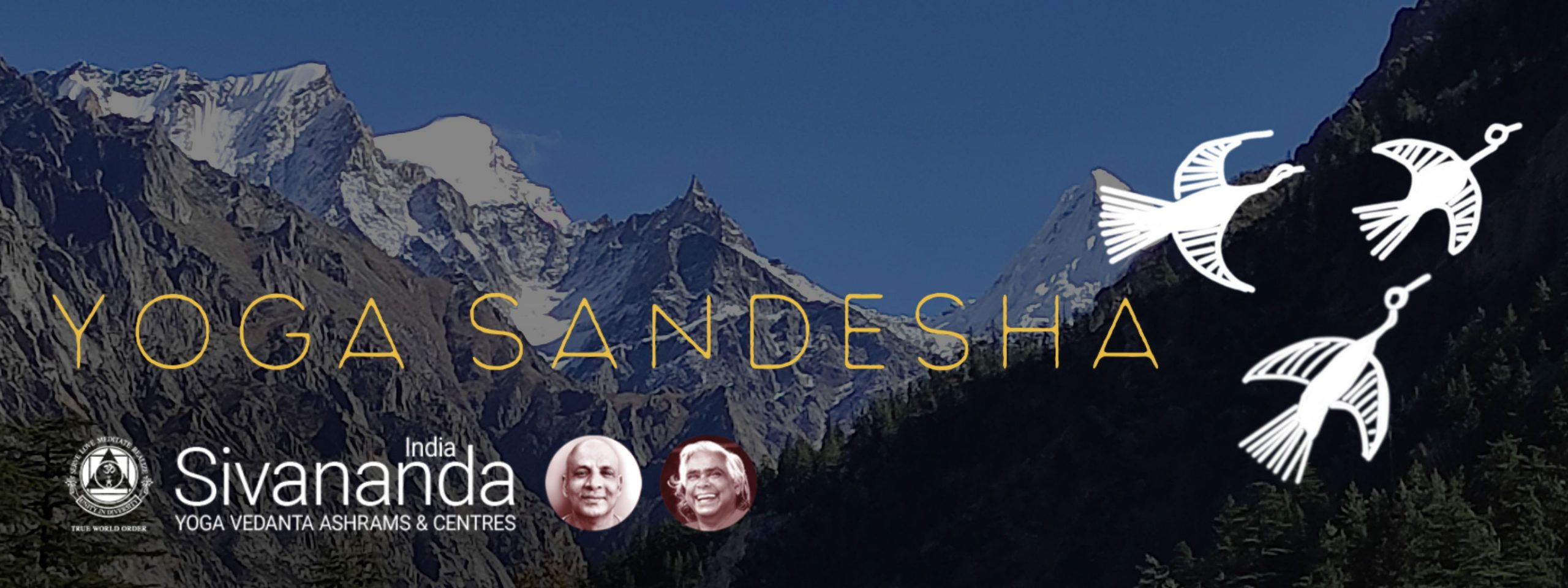
February 2023 | Connect
Om Namah Sivaya
Blessed Self,
Watching the ashrams and centres slowly fill up with sincere seekers of health and happiness is most heartening at this time. This interest in the practice reinforces once again the positive effects of the ancient teachings practiced and taught in all our locations as given to us by Master Swami Sivananda and our teacher Swami Vishnudevananda. Swamiji’s vision and mission was always to bring people together, in fact, he envisioned the whole world together. When we are complacent or forget our regular practice, we miss this vision and remain focused only on our own well-being. When various communities, cultures, and nations connect at the ashram to practice asanas, pranayama, and meditation together, what subtly occurs is that we tune to each other, support one other, and develop compassion and unconditional love for one other. In life, our minds constantly fluctuate and, as we face karmic situations, we tend to forget who we are and where we are going. However, when we embrace the practical teachings and connect with one another through those teachings, we see more clearly and remember. Let’s all appreciate the teachings that are transforming our lives in a very positive direction.
High season in India started very positively, with TTCs, ATTCs and SI courses well-attended, together with a thriving Yoga Vacation program. Our first-ever Teachers’ Refresher Course – A Global Union is filling up fast. Also, for the first time we are holding a unique conference to bring together women from various spiritual paths in communication and solidarity– Walking the Path: International Women’s Conference will be held online, featuring a range of prominent speakers and practitioners, generating quite a bit of interest. Please join us both online and onsite for these exciting programs being offered. May all of us live in peace and harmony.
Pranams to all,
Sivananda Yoga Vedanta Ashrams & Centres, India
It is said that everything is connected, if we learn how to see. One definition of yoga is understood as union, that means union of jivatman and paramatman, or the individual soul and the universal soul. The practices, if we’re doing them right, can also help us feel more connected to others and to realise that union in a practical sense. We understand that we are not so different from others. We share much more than we imagine, consciousness, goals, hopes, and dreams, heart and even our divine source. The differences between one body, one mind, and another are very small indeed.
In this issue of Yoga Sandesha we focus on connection. We’ll share the gurus’ words on love and highlight some connections found in the practices and traditional teachings. We’ll also share some interesting scholarship on the connections between synchronised movement, positive emotions, and feelings of social connection. Sounds a lot like yoga! We hope you find some inspiration in it.
As usual, please feel free to reach out to us with your thoughts and feedback: [email protected]
News Item:
Walking the Path
International Women’s Conference, Online
Walking the Path: International Women’s Conference is a first of its kind conference bringing together women spiritual leaders, thinkers, and practitioners for 7 days of curated talks, workshops, discussions, and Q&A sessions on Zoom. It has been inspiring experience of discovery and connection to reach out in solidarity and finding common ground in practice and experience. The Conference will be held from Feb 27 to March 5, 2023 on Zoom. We hope that you will join us and be part of the discussion!
Please visit our website for more information:
sivananda.org.in/womens-conference-2023
Photo Update:
Teachers’ Training Course Refresher
Looking towards our TTC Refresher course, to be held from Feb 20 to 26, 2023 at our Neyyar Dam Ashram in Kerala, we’re sharing some archival TTC photos, to get you in the spirit! The TTC Refresher is an opportunity to reconnect with your Sivananda Family, to refresh your teaching skills and understanding of yoga, and to enjoy the ashram community. Hope to see you there!
Research/Links
Research involving yoga and social connection!
- Association between warm, upbeat emotions, and vagal nerve tone and social connection:
www.sciencedaily.com/releases/2013/05/130509123537.htm - How synchronising movements with others helps to create social connection:
www.nature.com/articles/s41598-018-21765-4
Spiritual Calendar
February 1 – Ekadasi
February 5 – Full Moon
February 16 – Ekadasi
February 18 – Maha Sivarathri
February 20 – New Moon
Upcoming Courses:
Learn, Practise & Grow with Us!
Teachers’ Training Course (TTC)
Feb 12 to Mar 11, Neyyar Dam, Kerala
Feb 19 to Mar 18, Gudur, Andhra Pradesh
Feb 26 to Mar 25, Madurai, Tamil Nadu
Mar 19 to Apr 15, Neyyar Dam, Kerala
Apr 9 to May 6, Netala, Himalayas
For more details, click here
First ever Teachers’ Training Course (TTC) in Baddi, Himachal Pradesh
Apr 16 to May 13,
Baddi, Himachal Pradesh
For more details, click here
TTC Refresher Course,
Feb 20 to 26, Neyyar Dam, Kerala
For more details, click here
Walking the Path:
International Women’s Conference
Feb 27 to Mar 5, Online
For more details, click here
Teachings Excerpt:
How to Develop Love, Swami Sivananda

If you really want to root out hatred and develop Prem or pure love, you will have to serve that man whom your mind dislikes. You will have to serve that man who is planning to destroy you. When you hear that your bitterest enemy is sick, you will have to run immediately to his house and shampoo his legs with full Prem. You will have to attend on him day and night, just as you attend on your sick wife, son or mother. Even if inimical feelings rise in your heart, you will have to subdue them by raising frequently to opposite positive feelings of love. This is doubtlessly a trying, difficult Sadhana. But the benefits are wonderful. You will become a centre of power and energy. You will become a spiritual giant indeed. You will become an embodiment of love (Prem Murthi or Prem Vigraha).
When you try to control anger, when somebody has injured you, you should not only check the big wave of anger, but also try to eradicate the internal burning which remains even though you do not speak harsh words or express outwardly any signs of anger in the face. This is most difficult; but it can be eradicated by continuous service and love.
Whenever your friend is annoyed with you, speak to him first with a smile and apologise sincerely with tears even though you are right. Serve him nicely with Prem. Vindictive spirit is a deadly enemy of peace, devotion, love and Jnana.
May you enjoy the bliss of that sleepless sleep or Nirvikalpa Samadhi by resting in Turiya or the fourth state through identification with the all-pervading, eternal Brahman or the Infinite and thus free yourself from ordinary sleep which is a Jada or an inert state born of Avidya or ignorance.
Teaching Tips:
Sethubandhasana / Bridge
Sethubandhasana, the Bridge is a very adaptable asana which can be practiced in a variety of ways. In this video we show a therapeutic approach helpful for strengthening and recovering from injury. We also discuss the correct positioning of the hands and how important this is for establishing a bandha, or “lock” of the chest to the chin, therefore helping make subtle, energetic connections as we practice. We hope the video is helpful!
Connection:
Importance of Lineage and Tradition in Yoga

Sivananda Yoga Vedanta Ashrams & Centres is a classical yoga gurukula with decades of experiential teachings and a robust lineage associated with it. The teachings at the ashram have been passed down by our gurus Swami Sivananda and Swami Vishnudevananda. Over the years, the Sivananda Organisation has brought together a community of like-minded people who have learnt and now practice these teachings based on a set of yogic and vedantic principles. The yoga followed at the ashrams is an amalgamation of the four traditional paths of yoga including Raja Yoga, Jnana Yoga, Karma Yoga, and Bhakti Yoga, and learning to live yoga as a way of life deeply rooted in spiritual essence and harmony of body, mind, and spirit.
However, as the field of yoga has seen a global transformation, with new perspectives joining the depths of traditional understanding, yoga has gradually been regarded more as a science in last few years. Today, yoga is seen as a traditional art and most potent science of health and self-transformation, and there is more research to prove how yoga is the most potent art form to bring about physiological, neurological, biochemical, and physical changes in body and mind.
Amidst this growth of yoga in the modern era, the concept of the traditional lineage still holds an importance and being associated with a lineage is an important approach to grow your yoga practice. Here are some thoughts on the importance of lineage in yoga:
- Yoga is not a new science, it has a more than 2000-year-old history, way before modern science came into being. Back then, even without a concept of science, the saints and great seers devised this art form that was so precise in its practice that today the efficacy of these practices is being studied and proven. It is with a deep sense of dedication and practice of the ancient teachings that these lineages came about and thus hold the subtle secrets to practicing yoga the best way using body as a tool to walk the path of spiritual journey. Such traditions and lineages are the core of modern-day yoga and cannot be separated from its origin.
- Lineage comes with the traditional way of passing on knowledge directly from the guru to shishya. This guru-shishya parampara is considered an important methodology to learn the intricate techniques of subtle yoga practices which cannot be directly learnt by simply reading books or following the scientific principles of anatomy, physiology, or biomechanics. However, when this traditional knowledge from a lineage is co-joined with scientific methodology, yoga emerges as a powerful tool for human health.
- Yoga, one of the greatest treasures of the Indian culture has always thrived on guru-shishya Parampara, a system where these valuable teachings have been passed down over generations from teacher to student. In the process, many experiences, perspectives, approaches, methodologies, and learnings have emerged as a treasure of valuable knowledge with real-life value associated to it. Such experiences of an ongoing yoga lineage cannot be underestimated.
- Most yoga lineages have a strong focus on working with prana (life force) and raising the level of consciousness with all their yogic practices. Prana is the subtle force that fuels our mental and emotional sheaths. Through asanas or physical postures, the mental and emotional bodies are harmonised. This is a missing aspect in modern Yogic concepts. However, the understanding of the science of movement is where modern yoga science has made an impact. Again, when lineage and science joins, it becomes a perfect practice for body and mind.
Yoga traditions have evolved as a result of sadhana or spiritual training performed by the saints and gurus and the lineage comes as a living testimony of the experiences of its practitioners. What gets passed on by a lineage is the living proof of experiential learning.
Temple Showcase:
Padmanabhaswamy Temple,
Thiruvananthapuram (Trivandrum), Kerala
Sree Padmanabhaswamy Temple in Thiruvananthapuram is a Vishnu temple made famous for the historical riches it is said to store. Dedicated to Lord Padmanabha (with lotus navel), a reincarnation of Lord Vishnu, the temple, among 108 Vishnu temples mentioned in the works of the Alvars, the poet-saints of the Sri Vaishnava tradition, dazzles under the skies with its golden grandeur and intricate architecture. The Padmanabhaswamy Temple has stood tall for nearly 5000 years as per the legends, and is mentioned in the epics and the Puranas. Considered the richest temple in the world, the site is said to store millions of dollars’ worth of treasure in its secret chambers.
It is believed that the temple was built by sage Divakar Muni, also a devotee of Lord Vishnu. Ornate, with 324 pillars carved with female figures holding diyas (lamps) in their hands, the temple is an icon of grand Dravidian architecture. The sanctum of Lord Ananta Padmanabhaswami is a mesmerising sight with an 18 foot long idol of Lord Padmanabha reclining on the thousand-hooded Ananta (serpent), deeply absorbed in yoganidra and with the deities Sridevi, goddess of prosperity, and Bhoodevi, Mother Earth by his side. Separate shrines of Lord Ganapathi, Narasimha, Shiva, Subramanya and Rama also exist in the temple. The entry gate is almost 100 feet tall, indicating the grand presence of the temple. The taller the temple, the deeper are the mysteries associated with it!
About 20 feet underground the temple lies the richest treasure of the history worth $22 billion approximately in the form of gold ornaments, coins, idols, and diamonds.
Various controversies and mysteries have surrounded the temple for not only being the richest temple but also for the following details:
- About 20 feet underground, within hidden chambers, lies the richest treasure of any temple in India, in the form of gold ornaments, coins, idols, and diamonds
- The temple has 6 vaults believed to date back to 200 BC
- Stories associated with the vaults indicate that there exists a vibrational energy to safeguard the treasures and the cobra depictions on the walls symbolizes the spiritual energy safeguarding the treasure
- The biggest mystery of the temple is Vault B that probably could hold the biggest treasure in the history ever
The Padmanabhaswamy Temple is in Trivandrum, approximately one hour from the Neyyar Dam Ashram. In some cases, foreigners have not be admitted, however, those who abide by the Hindu faith and adhere to the mandated dress code of sari for women and lungi for men are generally allowed to enter. This beautiful and well-maintained temple is well-worth a trip to Trivandrum.
Nutrition Tips:
Similarities between Ayurveda & Traditional Chinese Medicine (TCM)
“The use of beneficial food is the only cause of the growth of a person, while the use of food that is injurious is the cause of disease.” – Charaka Samhita, Ayurveda
This is both the viewpoint of Ayurveda on diet, and also the TCM dietary philosophy. The ancient modalities of Ayurveda and TCM broadly have the same message of ‘deep-internal balance’ to pass on, only the approaches differ.
Ayurveda, TCM and Yoga Diet – The Common Connection
If there is one-word answer to what is common between TCM, Yoga, and Ayurveda, it has to be “energetics.” The universal energy that exists in the macrocosm and microcosm makes its presence felt in the form of energetic traits such as heat, cold, dry, damp, upward rising, balancing, expansive, contractive, and downward.
While TCM understands the energy of foods from the lens of yin (expansive) and yang (contractive) properties, the Ayurvedic approach to foods is based on the energetic properties of taste. For example, the sweet taste can be heavy, descending, soothing, and nourishing; the sour taste is stimulating; the salty taste is moistening and heating; the pungent taste is heating and dispersing; and the bitter taste is cooling and drying. Yogic science goes a step beyond and looks at foods as a source of awakening consciousness, thus foods with live energetic (chi/prana) properties such as living plants and sprouts are favoured in a yogic approach to foods. Thus, in all three ancient systems, foods are understood from the perspective of:

- Thermal temperature; for example, heat generating foods like cinnamon, or cooling foods such as cucumber
- Quality; for example, heavy or light, wet or dry, penetrating or soft foods. This aspect is defined by the specific tastes such as black pepper, which is dry, light, and penetrating.
- Direction, which means to which part of the body the energy of food goes. For example, ginger energy is dispersing and goes to the lungs for clearing mucus, to the skin for creating warmth, moving the blood, and relaxing the muscles.
From the physiological biomarkers’ perspective, TCM aims to reduce inflammation, keep the blood pH more alkaline, clean the gut and equip it with good gut bacteria, keep insulin levels stable, balance sodium-potassium levels, and impact the hormonal activity positively.
When it comes to understanding optimal health, yogic philosophy co-joins with the TCM and Ayurvedic dietary approaches, focusing on movement instead of specific foods as a tool to attain a subtle energy balance. Using movement in yoga to strengthen the internal organ systems and to purify the nadis (meridian channels) for a free flow of energy is a similar concept to the practice of shiatsu that TCM advocates.
Implementation of TCM Dietary Principles in Ayurveda Context
The understanding of foods from an energetic perspective is at the core of both TCM and Ayurvedic dietary principles. This dietary approach creates many commonalities such as macrobiotic concepts which have inherently been a part of how Indians eat! Here are the commonalities:
- Eating seasonally
- Avoiding processed and refined foods
- Keeping wholegrains at the centre of main meals
- Consuming vegetarian quality proteins
- Focusing on the energy of foods versus nutrition in foods
- Including fermented foods for microbiome health
- Consuming more vegetables than fruits
- Focusing on cooked foods
“Love expects no reward. Love knows no fear. Love Divine gives – does not demand. Love thinks no evil; imputes no motive. To Love is to share and serve.”
– Swami Sivananda


